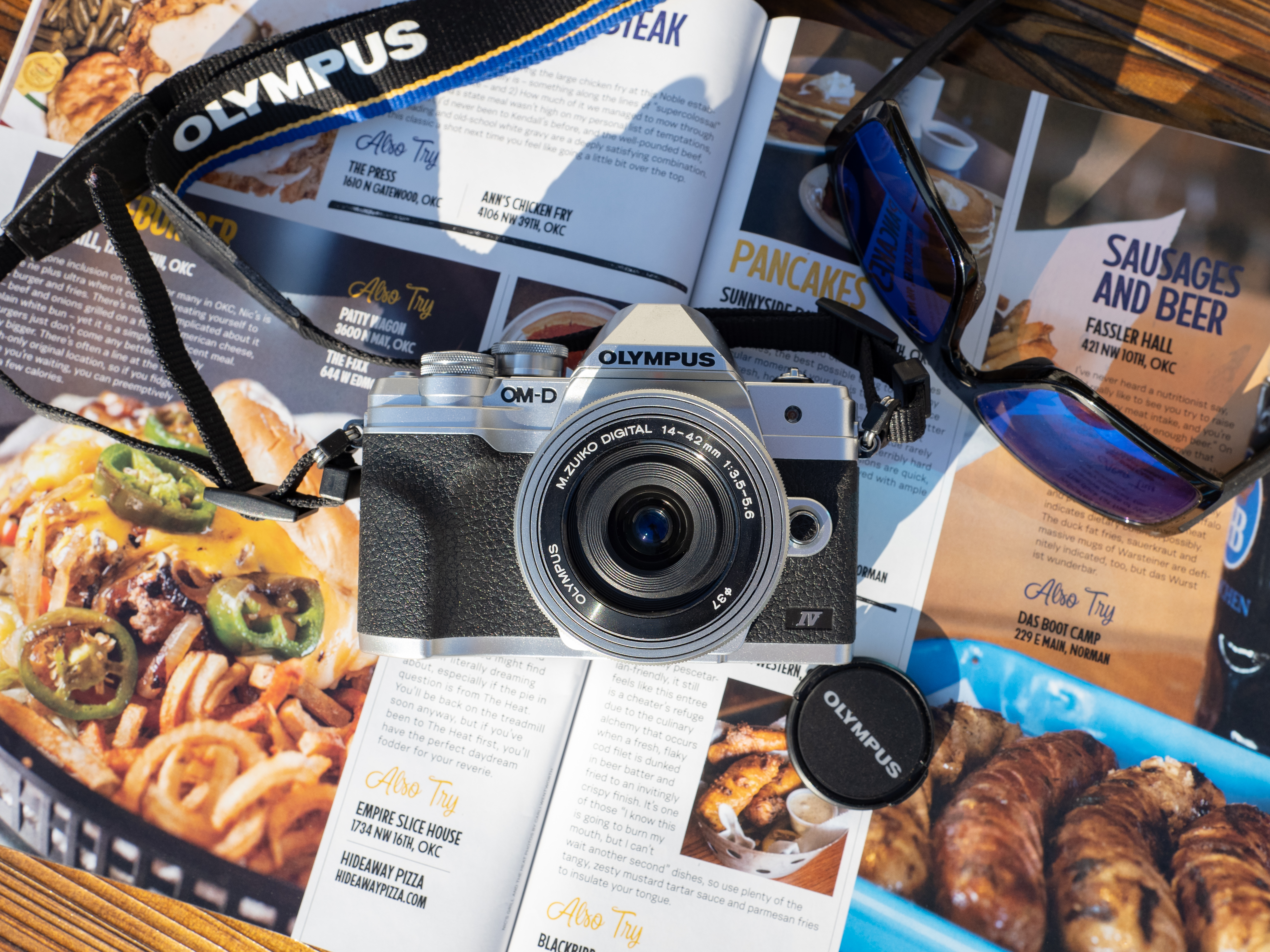Last Updated on 08/30/2020 by Mark Beckenbach
The Olympus EM10 IV is similar to its predecessor, but much more fun to use.
The Olympus EM10 line has always offered a fun way to get started with photography. With gorgeous retro looks and good all-around performance, this line of cameras has always excelled. Now, three years after the EM10 III, we are graced with the presence of the Olympus EM10 IV. Olympus claims to have tinkered with a lot under the hood of this small, vintage-styled camera, but do the upgrades make it worthwhile to buy? Find out in our full review.
Table of Contents
Pros and Cons
Pros
- Small size and weight
- Great image quality (albeit from a now 5-year-old sensor)
- Excellent ergonomics for its size
- Lovely retro looks
- Fun and easy to use One-touch Panoramic and Live Comp modes
- New autofocus algorithms have made a big impact
- 5-axis image stabilization works like a charm
Cons
- Battery life is not great
- No weather sealing
- Quite unbalanced when used with larger lenses
- No touch menus and poor menus overall
- Still only contrast AF
- Priced a little on the high side ($699 body only $799 kit)
Gear Used
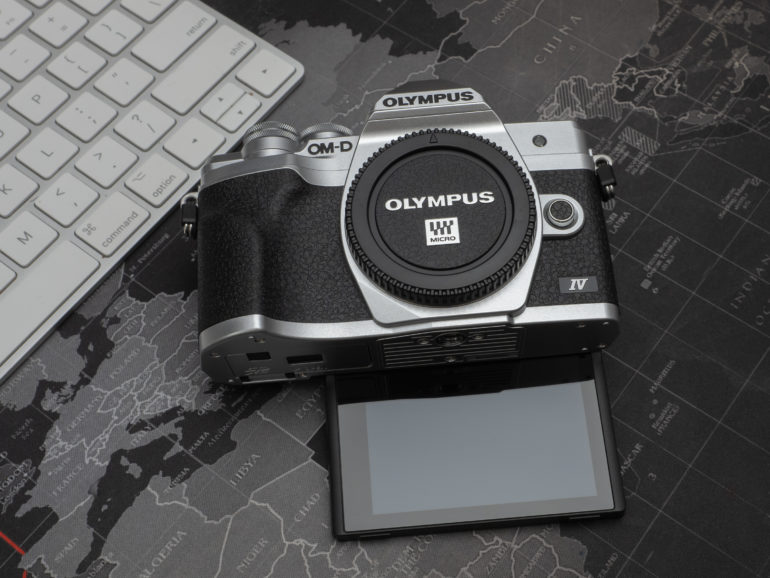
We used the Olympus EM10 IV with the Olympus 14-42 f3.5-5.6, the Olympus 17mm f1.2 Pro, and the Olympus 12-200mm f4 Pro.
Tech Specs
The full list of technical specifications has come directly from the information shared by Olympus.
- 20.3 Megapixel sensor
- TruePic VIII image processing engine
- Charges over USB
- 5 axis IBIS which provides 4.5 stops
- Contrast only AF with a re-worked algorithm for C-AF, which makes tracking easier
- 121 AF points
- 15 FPS with electronic shutter 8.7 FPS with mechanical
- 1/4000 max shutter
- Flip down screen for selfies and vlogging
- New one-touch advanced mode for Live comp
- One-touch portrait added to auto mode
- New panorama mode
- Silent shooting across all modes
- New instant film filter
- 4k video
- Enhanced eye and face detect
- Includes Bluetooth for better connectivity with Olympus share app
- Wireless Olympus flash compatible
- 2.36million dot EVF
- Weighs 383g (0.84lbs)
“The retro styling of this camera will surely turn some heads, and that’s not something that can be said about a lot of cameras today.”
Brett Day – Gear Editor
Ergonomics
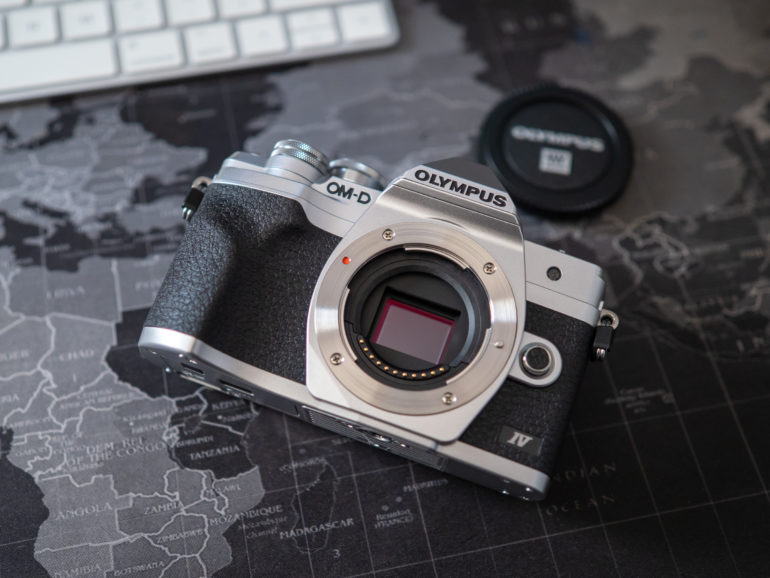
The Olympus E-M10 IV is the smallest of the OM-D cameras. The EM10 IV is about 2 inches shorter than my iPhone 11 Pro Max, so that should give some indication of the length of this camera. At first glance, you might think you’re looking at the EM10 II or the EM10 III. If it weren’t for the IV symbol located in the bottom right corner and the new grip with its slight finger indent you really wouldn’t be able to tell the difference.
The retro styling of this camera will surely turn some heads, and that’s not something that can be said about a lot of cameras today. There’s not much happening on the front. In fact, all you’ll find is the lens release button.
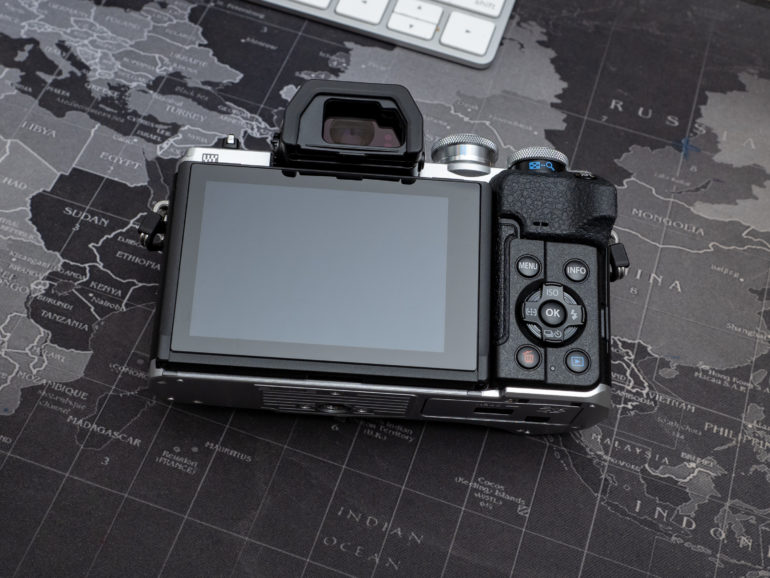
Flip to the back of the camera and, yep, it looks the same as the EM10 II and EM10 III. The rear of the EM10 IV is dominated by a 3-inch LCD touchscreen. Right above the screen, you’ll see the 2.36 million dot EVF. To the right of the screen, you’ll see the directional D-Pad, delete, playback, menu, and info buttons.
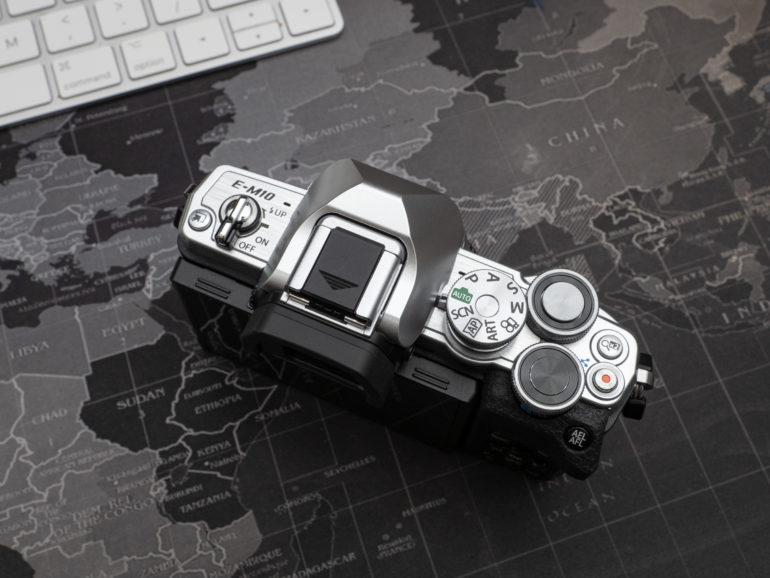
The top of the EM10 IV looks just like the…okay, we get it, not much has changed from previous models. The good thing is that Olympus’s retro styling continues here. To the left of the EVF is the on/off switch, which also controls the pop-up flash. There’s also a button that allows you to play around with the built-in filters and gives access to the super menu. To the right of the EVF, you’ll spot the main mode dial, dedicated aperture and shutter speed dials, a magnification button, and a record button.
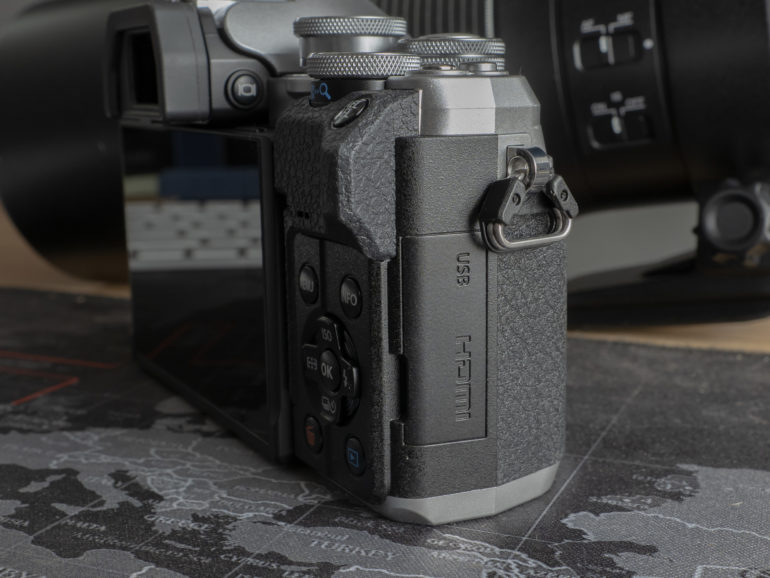
The right-hand side of the camera houses the micro HDMI port and the micro USB connector (that’s right, no USB-C here). The left-hand side of the camera is featureless, so you’re not going to get any headphone or microphone jacks. The SD card slots into the battery compartment, which is located on the bottom of the camera.
From an ergonomics standpoint, not much has changed with the Olympus EM10 IV from previous versions. The control layout will be familiar to anyone who has used these cameras before, and newcomers will find it easy to maneuver around the camera. The significant change is with the grip. The grip feels slightly deeper compared to previous models, and the finger indent isn’t just a gimmick. The indent is positioned just right, so your finger naturally falls there. It really does enable a better grip on this small camera. Olympus has done a really nice job with the EM10 IV.
“The EM10 IV could have been great for street photographers. However, no weather sealing renders it useless on a wet day, and that’s a shame.”
Brett Day – Gear Editor
Build Quality
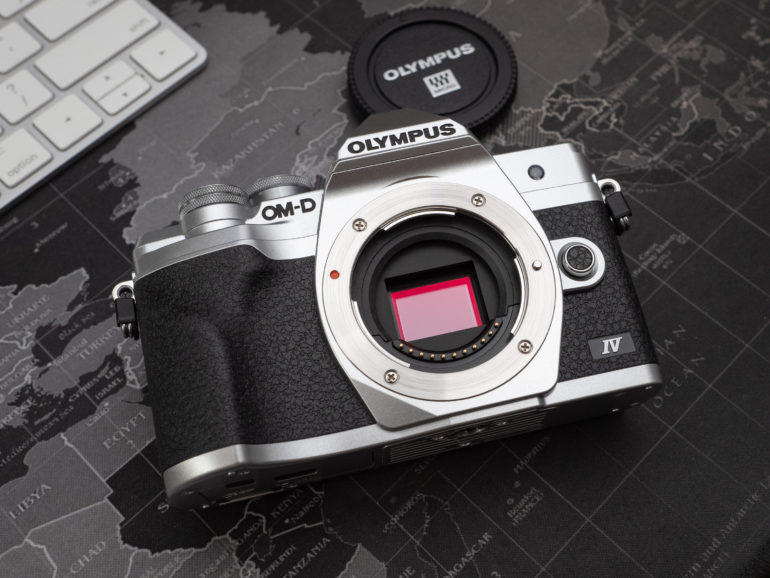
The Olympus EM10 IV is an entry-level camera: you can feel that in the build quality. While there’s nothing bad about it, it’s not anything to write home about. The whole body is made from plastic, while the dials on top are made from some type of metal. I am pleased to say the lens mount is also made from metal. The textured covering feels quite pleasant and it does provide some grip. That’s always a good thing with smaller cameras. It might be made from plastic, but the EM10 IV does feel nice. The weight of the body (0.84lbs) is just right too.
The D-Pad and other controls on the rear are plastic, and they have a nice clicky feel to them. The bracket the screen tilts and flips down on is made from metal and feels quite sturdy. Repeated use of the flippy screen should not cause any issues.
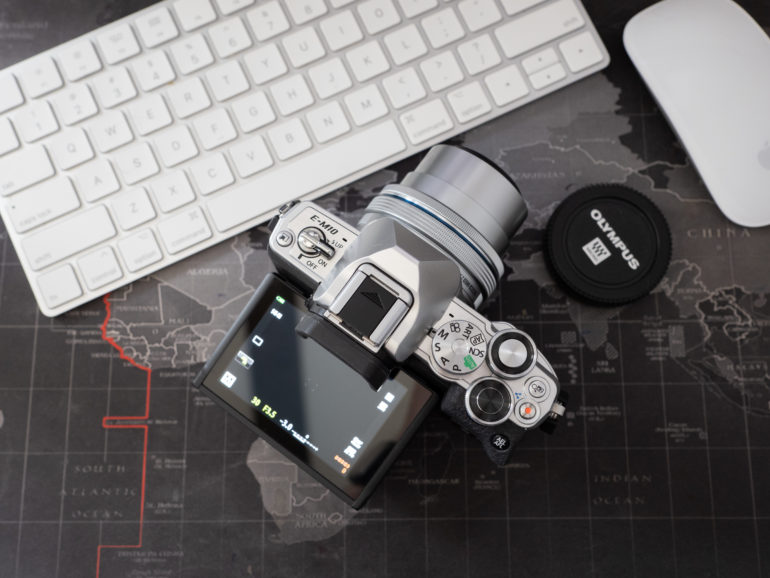
The EM10 IV has no weather sealing. This means you cannot use it in the rain, snow, or anywhere moisture is present. Taking this camera to the beach or to the lake will make you worry about it getting splashed or contaminated with grains of sand. In an age where people can take their incredibly weather-sealed phones with them anywhere, no wonder dedicated camera sales are falling. The EM10 IV could have been great for street photographers. However, no weather sealing renders it useless on a wet day, and that’s a shame.
The Olympus EM10 IV is a fair-weather camera. You’ll be able to toss the Olympus EM10 IV in a bag or a pocket, and it will be fine. Just remember that you can’t use it in harsh weather conditions. If you need a camera that you can work to death and treat it a little more harshly, you might look at the Olympus EM5 III instead.
Ease of Use
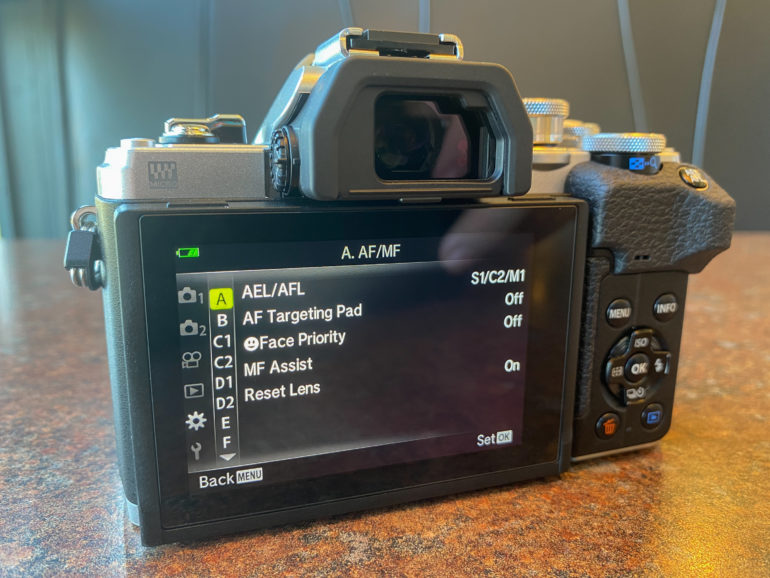
You’ll find that the Olympus EM10 IV has a slight learning curve. The layout of the physical controls is fine; they are well marked and are intuitive. The menu system is an area that continues to let an otherwise easy to use camera down. The menus on the EM10 IV are much easier to digest than the menus on Olympus’s pro bodies, though. However, the user interface still isn’t what I would call user friendly. I just wish Olympus would overhaul the entire menu UI.
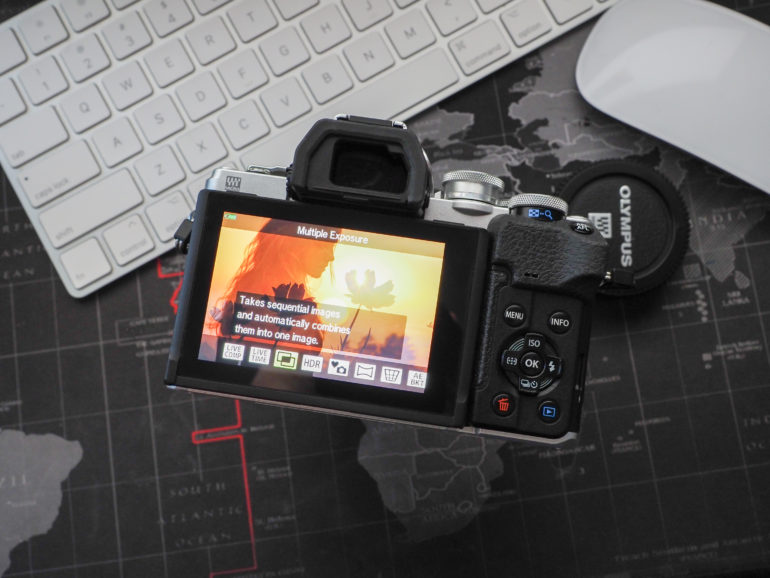
Outside of the main menu, things do start getting easier for those new to Olympus cameras. Use the automatic, scene, art, or advanced photo modes, and you’ll be greeted with colorful picture menus. There are also information boxes that will help guide you. In the advanced photo menu, you’ll find panorama, HDR, Live Comp, Live time, and more special modes. These user-friendly functions will help anyone create epic star trail images, gorgeous long exposures, and sweeping panoramas. What’s really worth noting is that Live Comp (one of my favorite features) now works with one single press of the shutter. This is huge; now, anyone can create complex images with ease.

Features like 5-axis IBIS and the 2.36 million dot EVF make the EM10 IV easy to use. The rear LCD displays sharp images and enough critical settings information. It’s also bright and a nice size. I love that the screen on the Olympus EM10 IV flips down 180 degrees. This will certainly appeal to those who like selfies. The camera is also so light you can handhold it while record vlogs.

Thanks to a newly designed grip, the Olympus EM10 IV is very easy to hold and use. In fact, I had no issues holding using this camera. (My hands are gigantic.). The reason for this is the indent in the grip. It’s positioned so that you can get that much more purchase on the camera; it’s brilliant. This is if you use the camera with smaller lenses, though.
The Olympus EM10 IV is so small that using larger lenses like the Olympus 12-100mm f4 Pro or Olympus’s f1.2 primes makes the camera very unbalanced. I walked around with the Olympus 17mm f1.2 Pro for a few hours and I didn’t have as much fun as when I was using the 14-42mm kit lens. Pair this camera with small primes like the Olympus 17mm f1.8, the 25mm f1.8, and the 45mm f1.8, and you will enjoy it so much more. With smaller lenses, you can use the EM10 IV with just one hand without any issues too.

The 5-axis IBIS in the EM10 IV is fantastic. We expected this: Olympus has been on top of the IBIS game for some time now. I have been able to easily handhold this camera down to 1 second. You’ll find the IBIS really comes in handy if you’re in low light. It also allows you to get creative with your work too. If you have naturally shaky hands, or perhaps sip a little too much java, you will benefit from the IBIS greatly.
There’s a little more bad news, though. The battery life isn’t the greatest. During one photowalk, the battery dropped to 50% after just 117 shots, and that was with little playback and screentime. In real-world use, you’re looking at 250 to 300 shots per charge. The battery has always been small in EM10 bodies: that needs to change. Carrying multiple batteries gets old. Overall, the Olympus EM10 IV is a nice camera to use. Once you learn the menu system and the advanced photo modes, you’ll enjoy it. The camera is fun looking, fun to use, and it can slip into a small bag. You’ll find yourself taking it with you on all of your daily adventures (as long as it’s not raining).
“You’re not going to be using this camera for professional work anytime soon. Still, the EM10 IV can easily track pets and kids running around.”
Brett Day – Gear Editor
Autofocus

The autofocus systems in earlier EM10 cameras left a lot to be desired. However, Olympus claims it has improved the contrast-detect AF algorithms for the Olympus EM10 IV. In general, the AF performance is snappy in good lighting conditions, but I have noticed some hunting in low light, low contrast scenarios. Honestly, this was expected, given that there is no hybrid phase-detect system here. I have, however, witnessed significant improvements when it comes to tracking over previous models.
Tracking






Tracking is much improved over the EM10 II, which I own. Here is a sequence of my dog charging at me. The Olympus EM10 IV didn’t miss a beat. I have also been able to repeat this test with other subjects and found that the camera is a consistent performer. You’re not going to be using this camera for professional work anytime soon. Still, the Olympus EM10 IV can easily track pets and kids running around. If little Johnny has a soccer game, this camera will track and capture him scoring a goal with no problems.
Eye Autofocus

Eye autofocus in the Olympus EM10 IV works well for the most part. It’s not as advanced as systems found in the Olympus EM1 III, or any of Sony’s cameras, but it gets the job done. Here’s what I found during these tests.
The EM10 IV will lock onto your subject’s eyes from about 4 feet or closer. At these distances, eyes are tracked perfectly. You’ll get sharp eyes in your images every shot. Step back further than this, and the camera switches over to face tracking only. When in great to moderate light, the EM10 IV locks onto eyes quickly, but it will struggle in dark scenarios. If you’re not shooting portraits, you’re going to want to turn eye autofocus off. For some reason, when eye and face AF are turned on, it will see faces in things like trees. Again, those new to traditional cameras will find that this feature performs adequately.
Image Quality

Images from the Olympus EM10 IV are splendid. Yes, the 20MP sensor in this camera is five years old now, and that is a problem, but it’s still capable of producing terrific images. Olympus colors are gorgeous, and the RAW files are easy to work with. The JPEGS produced are some of the best in the business, and you’ll even find that the EM10 IV is decent in low light situations. Let’s break it down below.
RAW File Versatility

RAW files from the Olympus EM10 IV can be pushed and pulled around a bit more than you might expect. Many think Micro Four Thirds cameras lack Dynamic range, but these images will show you otherwise. The photo above was purposefully underexposed so that I could try and recover shadow details.

Above is the same image after I had edited the RAW file. As you can see, I was able to bring back a ton of details from the shadows. The leaves that were totally dark in the original image have nice colors, and noise is well controlled.

The image above was overexposed so that I could test highlight recovery. As you can see, there’s no detail in the sky.

Here is the edited RAW file. A ton of detail has been recovered in the highlights. Are you going to get as much dynamic range as you would with a larger sensor camera? No, but there’s plenty of play in the files to recover images unless you over or underexpose by a massive amount.
JPEG Quality

JPEGS produced by the Olympus EM10 IV are excellent. I found myself shooting JPEGS almost exclusively with this camera for a couple of reasons. One, this is the way most people who purchase this camera will shoot, and I wanted to be able to give an accurate account of shooting JPEGS only. The second reason is that they are so good, there’s no real reason to shoot RAW unless you don’t know how to properly expose manually.

Shadows and highlights are nicely controlled, and contrast levels when shooting in black and white are terrific. The colors are beautiful and vibrant. Noise is well controlled, and all images are corrected for distortions and chromatic aberrations in-camera. Being able to shoot JPEGS knowing that you will get killer results is one of the reasons this camera is so much fun.
High ISO Performance

Micro Four Thirds cameras aren’t known for their high ISO performance. Still, you can push the EM10 IV somewhat hard and get good results. ISO 6400 is the absolute limit for me with this camera, and I don’t recommend shooting past this. Images up to 3200 are still great and contain lots of detail.



Extra Image Samples
Below you will find a mixture of unedited and edited RAW files converted to JPEG. There are also straight out of camera JPEG files. This is to show what to expect from this camera.













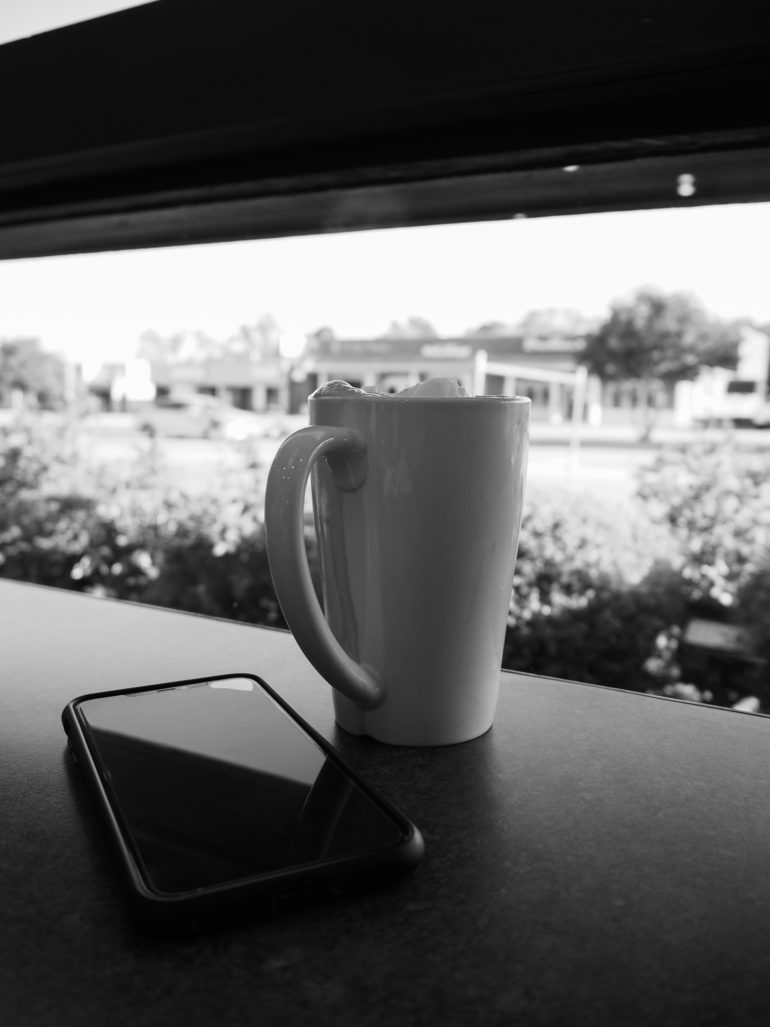

Conclusions
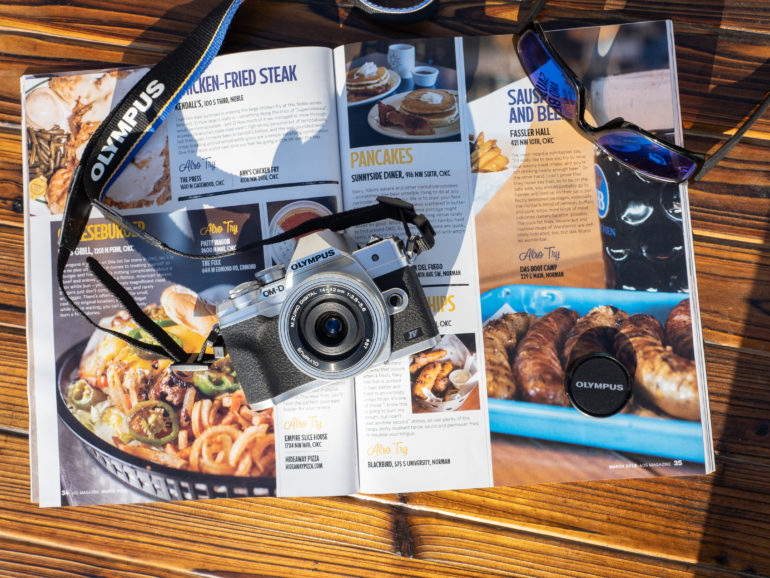
Likes
- Small size and weight make the Olympus EM10 IV fun and easy to use
- The JPEGS are excellent and are ready to share instantly
- Olympus worked some magic with the autofocus and tracking system
- It has Olympus’s legendary IBIS
Dislikes
- We really wish battery life was better
- The Olympus EM10 IV desperately needs a little weather sealing
- The menu system needs to burn
- It’s $699 for the body only
If you want a fun, feature-packed camera you can take anywhere with minimal fuss, the Olympus EM10 IV might be for you. The Olympus EM10 IV is perfect to document everyday life. Slip this camera in your pocket or bag and take it everywhere. This camera is also ideal for those stepping up from smartphones. Spend quality time with the camera, learn the system, pair it with small lenses, and you’ll have a blast using it.
The biggest drawback is the price. At $699.99 for the body and $799.99 with the 14-42mm f3.5-5.6 kit lens, it’s a little hard to swallow. The Olympus EM10 IV has a lot of recycled technology from the past five years, and honestly, it should have been priced more competitively. Still, if you need a small camera with IBIS, and like using primes, you’ll enjoy every minute spent with this camera.

The Olympus EM10 IV scores a solid four out of five stars. The EM10 IV has just enough improvements over the three-year-old EM10 III to make it a worthwhile upgrade. The 20MP sensor is excellent, and the camera feels great in hand. The improved autofocus is also fantastic. Add in one-touch live comp and the new panoramic mode and you have an excellent little camera. The amount of fun you’ll have with the EM10 IV makes it a worthwhile buy. If it had weather sealing and better battery life, it would have been a homerun. Want one? Visit Amazon for the latest prices.


